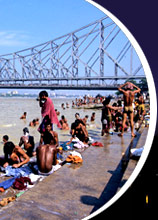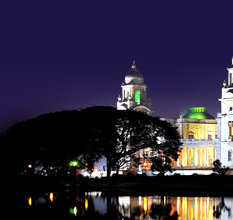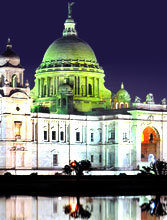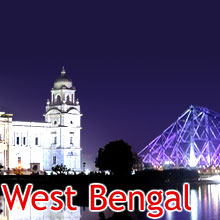 Murshidabad is one of the nineteen districts in West Bengal. The district has a city with the same name. Located on the southern bank of the Bhagirathi, a tributary of the Ganges River, the city was the capital of undivided Bengal during the Mughal rule. Talking about its origin, Murshidabad was named after Nawab Murshid Quli Khan, the Dewan of Bengal, Bihar and Orissa. The history of Murshidabad dates back to the pre-historic times. Many kings and rulers had made it one of the entities in their kingdom. During the British rule over India, Murshidabad remained a seat of administration.
Murshidabad is one of the nineteen districts in West Bengal. The district has a city with the same name. Located on the southern bank of the Bhagirathi, a tributary of the Ganges River, the city was the capital of undivided Bengal during the Mughal rule. Talking about its origin, Murshidabad was named after Nawab Murshid Quli Khan, the Dewan of Bengal, Bihar and Orissa. The history of Murshidabad dates back to the pre-historic times. Many kings and rulers had made it one of the entities in their kingdom. During the British rule over India, Murshidabad remained a seat of administration.Coming to the topography of the place, Murshidabad sprawls to an area of 5,341 sq km, with its headquarters at Baharampur. Bhagirathi River divides the district into two parts - while the Rarh region is a high, undulating continuation of the Chota Nagpur plateau and lies in the west, the eastern portion is a fertile, low-lying alluvial tract, part of the Ganges Delta, known as Bagri. Jalangi River, along with the tributaries of both the rivers, flows past the region. The district of Murshidabad is well connected by air, road and rail, making it easily accessible from all the parts of the state and the country in general.
Once the seat of the royal family, Murshidabad, today, boasts of a rich cultural and historical heritage. Till date, the town of Murshidabad serves as the residence of the Nawab, who ranks as the first nobleman of the province and is called the Nawab Bahadur of Murshidabad. There is also an educational institution named after Nawab family. Once in Murshidabad, you cannot get away without admiring the magnificent palaces, mosques, tombs and gardens. Talking about the tourist attraction of the region, Hazarduari Palace or the palace with thousand doors ranks the highest.
Built in 1837, Hazarduari Palace is three-storied wonder. It now serves a museum and has an exquisite collection of armory, splendid paintings and exhaustive portraits of the Nawabs. Apart from this, tourists can also revel in the beauty and structure of Katra Mosque, Kathgola, Wasef Manzil and Nizamat Imambara. Murshidabad is an excellent spot for those who are interested in archeology and history. The regal glory and imperial beauty of the place is sure to charm your senses and leave you fascinated. If you are in love with archaic structures, diverse culture and royal beauty, Murshidabad would surely captivate you.
Mushidabad History
Murshidabad has a history that goes back to the pre historic times. Many kings and rulers had made the district one of the entities in their kingdom. However, very little is known about the prehistoric era of Murshidabad. It was in the early eighteenth century that the district got its present name and later on, its present shape.
How to Reach
Located on the southern bank of the Bhagirathi, a tributary of the Ganges, Murshidabad district sprawls over 2,062 sq mi. It is located at a distance of about 221 km north of Kolkata and is well-connected by railways and roadways.
Tourist Attractions
One of the nineteen districts of West Bengal, Murshidabad is primarily an agricultural district, having a rich historical and cultural background. Named after Nawab Murshid Quli Khan, the Dewan of Bengal, Bihar and Orissa, the district is located on the banks of the Bhagirathi. A city of splendors & silk, it was made the capital of West Bengal in 1717. Talking about the tourist attractions, the district of Murshidabad has a lot to offer.








